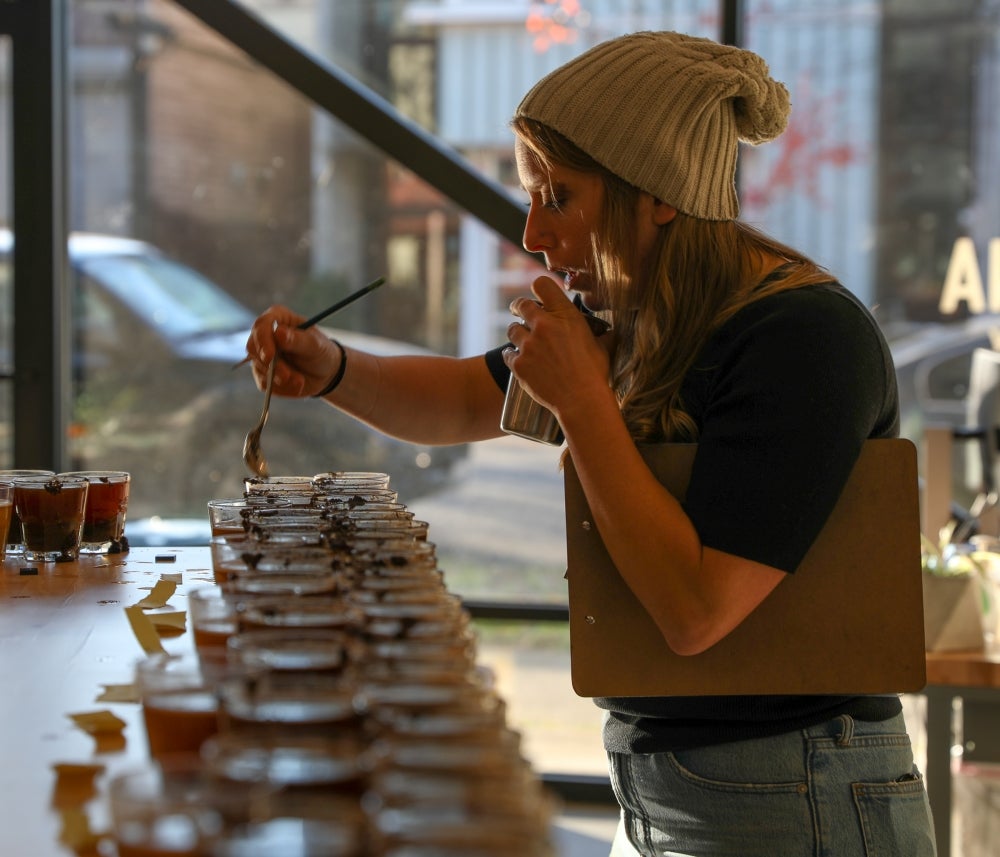From the Lab
Monday, March 29, 2021
Better Communication through Calibration
When we’re calibrating, we’re improving our ability to talk about coffee. Calibration helps us connect each client with the coffee they are looking for and bridges the distance between suppliers and roaster clients.

From my position as QC Manager for Sucafina North America, I’ve been coordinating remote calibrations for our North America team over the past 2.5 years. At the same time, I work with my colleagues in Europe and Asia Pacific to foster regular communication, share best practices and learn from each other. Recently, they published an article about water mineral content, which you can check out here.
Our existing experience with remote calibration made us well-prepared for the unusual circumstances caused by the pandemic. Throughout the past year, we’ve continued to improve our company-wide calibration abilities and continued to work with our colleagues across the globe to source excellent coffees and get you the coffees you want at the best prices possible.
QC and Traders Work Hand-in-Hand
Cupping coffees side-by-side in the same room at the same time is an easier, more immediate way of calibrating. If you’re all cupping the same coffees in the same room at the same time, it’s much easier to calibrate between the entire team. Alternatively, remote calibration—cupping the same coffees at slightly different times and in different places—can be challenging.
Remote calibration, however, strengthens daily communication between our QC and trading teams. Fortunately, remote calibration is a form of calibration that we implemented in North America long before we were all impacted by the global pandemic.
Calibration Means Better Coffee for Clients
Calibration provides a mutual language, despite distance and cultural diversity. When we’re calibrated with our suppliers, we can go through the sampling and approval process much more quickly, bringing you fresher coffee faster and at better prices.
Remote calibration between our QC team and the traders not only creates greater cohesion amongst our North American team, but it imitates the remote calibration that is required between ourselves and our origin suppliers. Moreover, Sucafina’s vertical integration lends greater transparency in the global calibration process, enabling us to find the ideal coffees while reducing overall costs.
Calibration with You in Mind
In QC we have the unique opportunity to work on being calibrated with the diverse needs and preferences of all our clients. That’s one of the reasons I was attracted to this role: while each trader has their clients that they’re working closely with and know super well in QC, it’s an exciting challenge to understand the quality expectations of each origin and to keep everyone in mind.
Our calibration also plays a role in increasing producer livelihoods. In several of our origins, including Kenya, we’re focusing on buying a producer’s entire harvest--producers can often get good prices for their highest grades but then may struggle to sell the bulk of their harvest. Through constant communication with our colleagues at origin and our other destination regions, we’re able to find homes for a wide variety of profiles and grades in a way that is as efficient as possible.
Calibration supports sharing information about new suppliers across purchasing regions. With a shared vocabulary, we can better communicate what we’re looking for and what we’ve found.
With our understanding of each client’s preferences, we work with traders to find appropriate samples to send. When we send samples, we ask for feedback, which helps us build and improve our understanding of each client’s preferences and better select samples in the future. Since cupping in person with our clients is an invaluable tool, we’ve developed creative pandemic-friendly alternatives. We now hold virtual ‘face-to-face' cupping sessions with our clients over Zoom. Additionally, our new virtual series, Exploring Origins, which included roasted sample packs of a variety of coffees from each origin we explored in our series, gave us an exciting way to receive in-depth feedback about grade and quality preferences.
Calibration is the tool we use to effectively communicate needs and expectations across all parts of the supply chain. Our position at the crossroads of sourcing and selling emphasizes how important calibration is at every stage of coffee’s journey. Being calibrated with our suppliers and our clients saves everyone time and money, and it makes us better communicators overall.
About the Author
Susan Wilcox is a Q grader with 5+ years in QC. She joined Sucafina in 2018. She has served as an SCA event judge for Brewer’s Cup. When she’s outside the lab, you’ll find her training her Belgian Malinois, Sebastián, and turning down quiche in favor of breakfast burritos.